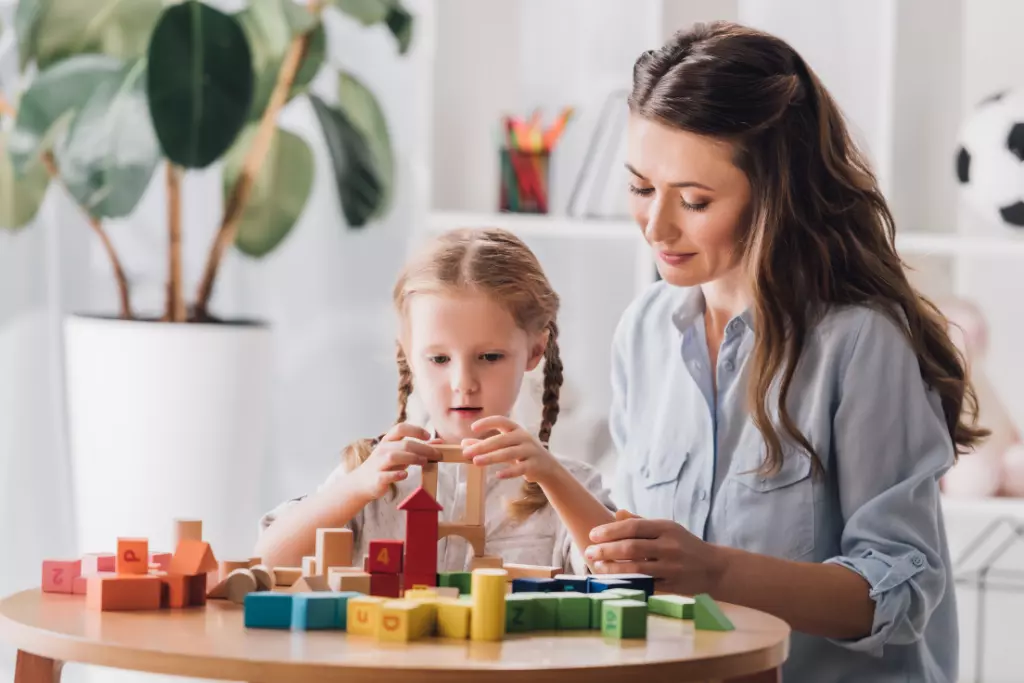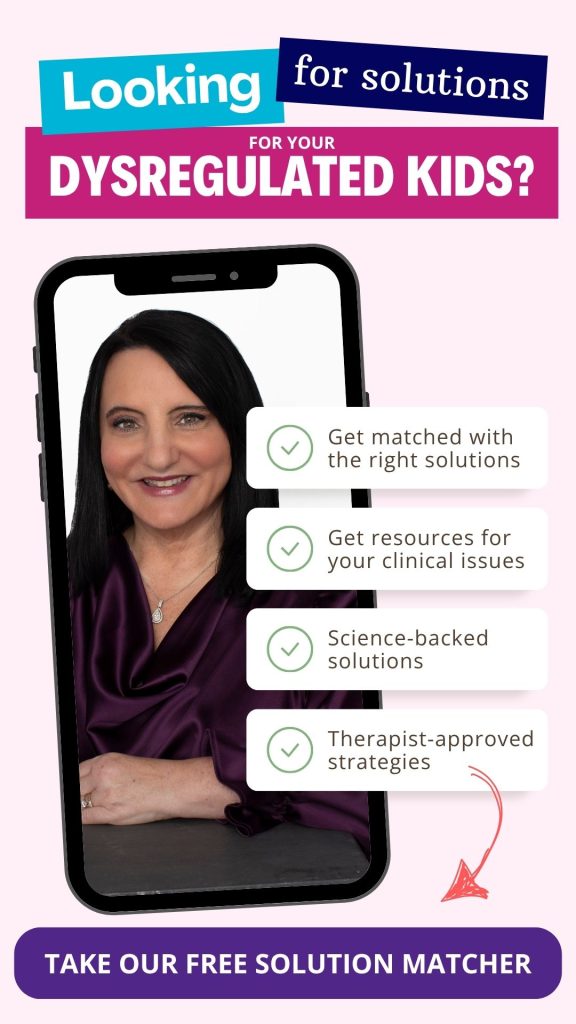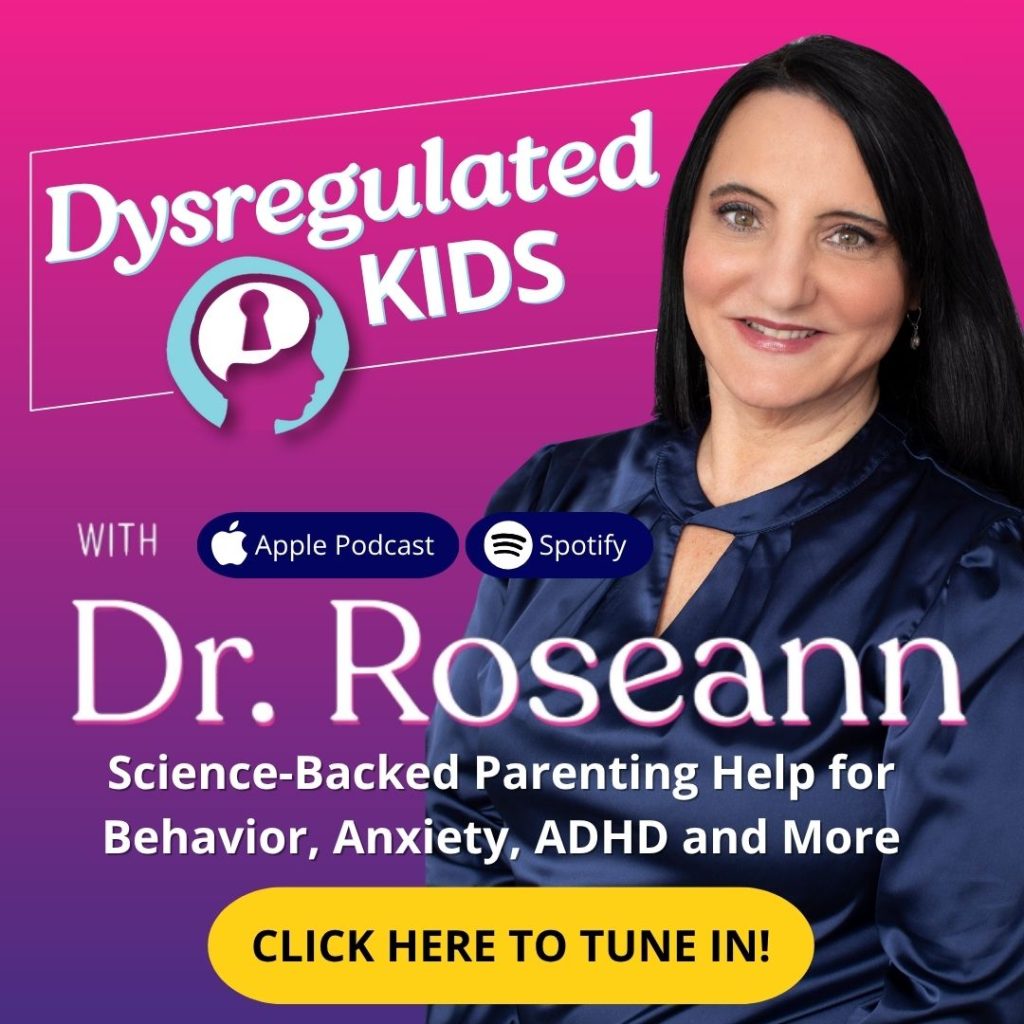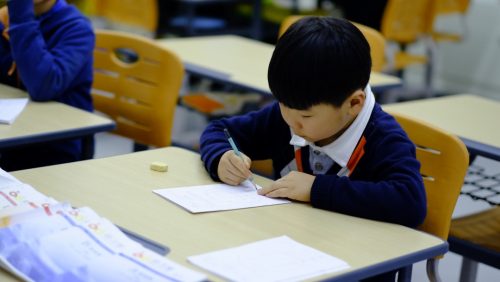Estimated reading time: 7 minutes
If your child struggles socially, gets lost in group work, or misses the big picture, you may wonder—is it NVLD or autism? You’re not alone. Both affect learning, communication, and behavior.
When we calm the brain first and understand the key differences between NVLD vs. autism, we can support your child with clarity, calm and confidence.
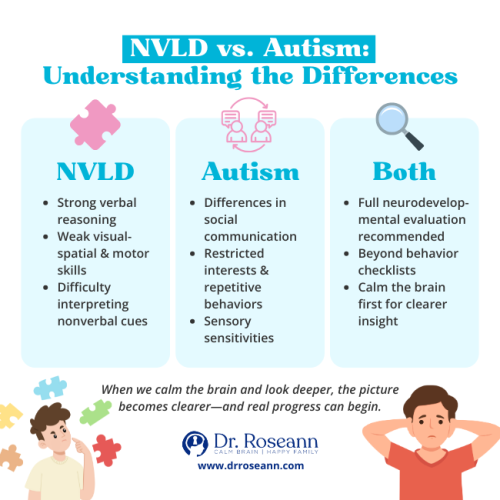
Nonverbal Learning Disorder (NVLD) and Autism Spectrum Disorder (ASD) can look similar on the surface. Kids may struggle with social cues, emotional regulation, and sensory overload—but underneath, their brain wiring is different (Frechette et al., 2024).
Here’s how they differ:
|
NVLD involves: |
Autism includes: |
|
Strong verbal and memory skills |
Broader challenges with social reciprocity |
|
Weaknesses in visual-spatial processing |
Differences in communication and interaction |
|
Difficulties with motor coordination |
Restricted or repetitive interests |
|
Challenges in nonverbal communication |
Sensory processing differences |
Children with NVLD often want to connect but miss subtle cues like tone or gestures. Children with autism may struggle to understand or seek those connections at all.
In short:
- NVLD = misreading social cues
- Autism = different social motivation and sensory wiring
When we calm the brain first, connection becomes possible—no matter the diagnosis.
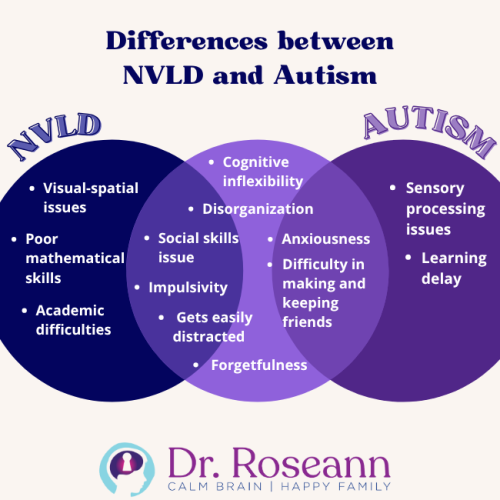
Many kids show traits of both conditions because the brain systems tied to social understanding and sensory regulation often overlap (Pardo-Salamanca et al., 2024).
Ever feel like your child’s brain runs two programs at once—one craving connection, the other overwhelmed by it? Some days they seem fluent in emotion yet lost in translation when reading social cues.
Common shared challenges include:
- Trouble reading facial expressions or tone
- Difficulty shifting gears or handling change
- Sensory overload in noisy spaces
- Anxiety and emotional outbursts
Both NVLD and autism can bring executive-functioning struggles that touch every part of daily life. Even simple routines can spiral into chaos—missing shoes, forgotten assignments, tense mornings. Beneath it all lies a brain working overtime, trying hard to keep up.
When we calm the brain first, everything changes. A calm brain connects and learns—it’s the heart of Regulation First Parenting™.
Once safety settles inside, progress follows, storms ease, and parents realize their child was never broken—just waiting for calm to lead.
Signs of NVLD in Children
Children with NVLD are often bright talkers who appear “fine” to teachers but melt down after school. Their verbal strengths mask their struggles with nonverbal information.
Key NVLD signs:
- Strong vocabulary and memory for facts
- Difficulty reading maps, graphs, or visual instructions
- Awkward motor skills (handwriting, sports, tying shoes)
- Over-talking or interrupting in conversation
- Trouble understanding sarcasm, facial expressions, or social cues
- Easily overwhelmed by new routines or unstructured settings
Parent story:
Janet, a mom of a 10-year-old, noticed her daughter could memorize entire books but cried when classmates changed playground games. “She just didn’t get what others were thinking,” Rachel said. Once we understood it was NVLD—not defiance—we could support her brain’s need for structure.
Takeaway: When kids seem “smart but struggling,” look beneath behavior for brain-based learning differences.
Signs of Autism in Children
Autism exists on a spectrum—from highly verbal to nonverbal—but all children share patterns of social and sensory difference (Lord et al., 2020).
Core autism traits include:
- Challenges with social reciprocity
- Repetitive behaviors or narrow interests
- Strong need for routines and predictability
- Sensory sensitivities (sound, light, touch)
- Differences in play and imaginative engagement
Parent Story:
Greg, dad to 6-year-old Mateo, shared, “He loved spinning wheels but barely noticed when kids called his name. Once we understood his sensory-seeking brain, we used more movement and fewer words—and connection followed.”
Autism isn’t a lack of interest—it’s a different way the brain experiences and engages with the world. When we calm the brain first, connection becomes possible.
How Are NVLD and Autism Diagnosed?
Diagnosis can be tricky since NVLD isn’t formally recognized in the DSM-5, while autism is. Yet neuropsychological testing or brain-mapping can reveal clear differences.
|
What NVLD assessments often show |
What Autism assessments include |
|
Strong verbal reasoning but weak visual-spatial or motor skills |
Differences in social communication |
|
Difficulty interpreting nonverbal cues |
Restricted interests and repetitive behaviors |
|
Average or above-average intelligence |
Sensory sensitivities |
Both benefit from a full neurodevelopmental evaluation—not just behavior checklists. When we calm the brain and look deeper, the picture becomes clearer—and real progress can begin.
What Causes NVLD and Autism?
Neither NVLD nor autism has a single cause. Both stem from differences in how the brain connects and communicates—shaping how children process information and experience the world.
In NVLD:
- The right hemisphere and white-matter pathways may process spatial and nonverbal information differently.
In Autism:
- Neural networks for social communication and sensory integration may develop atypically.
- Inflammation, genetics, and environmental stressors can also affect regulation and overall brain-body balance.
Many kids we see aren’t just autistic or NVLD—they’re dysregulated. When the nervous system is overactivated, everything from focus to flexibility gets harder. Calm the brain first, and the diagnosis becomes clearer.
How Can Parents Support a Child With NVLD or Autism?
The foundation is the same. Regulate first. When we calm the nervous system, learning, connection, and growth naturally follow.
Supportive Strategies That Work
1. Structure and Predictability
- Use visual schedules and checklists
- Give gentle warnings before transitions
- Celebrate small wins often
2. Co-Regulation
- Practice slow breathing together
- Keep your voice low and body relaxed
- Offer deep-pressure hugs or sensory breaks
3. Brain-Body Connection Tools
- QEEG-guided neurofeedback
- CALM PEMF™ for stress and anxiety relief
- Lifestyle pillars: restorative sleep, nourishing food, daily movement
4. Gentle Social Learning
- Role-play conversations and greetings
- Model social interactions calmly
- Use visual stories to teach social nuance
Evidence-Based Supports for NVLD and Autism
- Cognitive Behavioral Therapy (CBT): Builds coping and reduces anxiety (Bekirogullari, 2018)
- Occupational Therapy: Strengthens coordination, handwriting, and sensory tolerance
- Social Skills Training: Teaches joining, turn-taking, and emotional awareness
- PEMF Therapy: Promotes nervous system regulation and reduces rigidity
- Neurofeedback: Retrains brainwave patterns for calm, focus, and mood balance
- Parent Coaching: Regulation First Parenting™ helps adults master co-regulation
- Lifestyle Supports: Sleep hygiene, clean nutrition, movement, and gentle detox practices
Tailored Support by Condition
NVLD:
- Occupational therapy for motor and spatial integration
- Social coaching with visual supports
- Academic accommodations (extra time, step-by-step guidance)
- Speech and language therapy
- Sensory-based occupational therapy
- Behavioral support rooted in co-regulation
Both Benefit From:
- Neurofeedback
- Parent coaching
- Lifestyle foundations that calm the brain and body
Can a Child Have Both NVLD and Autism?
Yes—it’s more common than you think. Some kids meet autism criteria while also showing NVLD-style spatial and motor challenges that make everyday tasks tricky.
The key is understanding what’s really driving their struggles—social cues, sensory overload, or regulation gaps—so the right support hits the right target.
Takeaway:
Labels guide care, not define your child. Calm first, then connection blooms. Potential opens like a door left slightly ajar—ready for learning, growth, and joy.
How Do Emotional and Nervous System Dysregulation Connect to NVLD and Autism?
Both NVLD and autism often come with dysregulated nervous systems. That means your child’s brain is stuck in fight, flight, or freeze more often than calm.
When dysregulated, children may:
- Have meltdowns over small changes
- Avoid social situations
- Show anxiety or shutdown behaviors
That’s why Regulation First Parenting™ matters. When we help the brain feel safe and balanced, kids can access learning, flexibility, and connection.
Parent Action Steps
- Learn about NVLD and Autism traits.
- Observe your child across different settings.
- Collaborate with teachers and therapists on a support plan.
- Provide structure and predictability at home and school.
- Enroll in social skills training or coaching.
- Foster emotional intelligence through discussions and activities.
- Support alternative communication methods if needed.
- Encourage positive peer interactions and friendships.
- Nurture strengths and interests to build confidence.
- Practice patience, empathy, and consistent support.
- Take the Solutions Matcher to find the right treatment for your family.
- Explore targeted solutions, such as the Neurotastic Multi-Mag Brain FormulaTM for brain health.
- Learn more about the BrainBehaviorReset™ Program to support your child’s regulation and growth.
FAQs
Is NVLD considered part of the autism spectrum?
No. NVLD shares some features with autism but is neurologically distinct. NVLD lacks the repetitive behaviors and restricted interests common in autism.
Can NVLD turn into autism?
No. NVLD doesn’t “become” autism, but overlapping symptoms may make one appear like the other until properly assessed.
What kind of therapy helps NVLD and autism most?
Brain-based and regulation-first approaches—like neurofeedback, OT, and co-regulation strategies—are more effective than traditional talk therapy alone.
Will my child outgrow NVLD or autism?
While these are lifelong neurotypes, children can learn powerful coping and self-regulation skills that help them thrive academically and socially.
How do I explain NVLD or autism to my child?
Keep it positive and clear: “Your brain learns differently. That’s what makes you amazing—and we’re learning how to help it stay calm and strong.”
Citations
Bekirogullari, Z. (2018). Cognitive Behavioural Therapy in treating persons with learning disabilities. Journal of Educational Science and Psychology. https://files.eric.ed.gov/fulltext/ED593577.pdf
Frechette, J. D., Murphy, L., Castro, R., & Boyle, K. (2024). Differential diagnosis: Understanding nonverbal learning disorder and autism spectrum disorder. Applied neuropsychology. Child, 1–11. Advance online publication. https://doi.org/10.1080/21622965.2024.2425363
Lord, C., Elsabbagh, M., Baird, G., & Veenstra-Vanderweele, J. (2018). Autism spectrum disorder. Lancet (London, England), 392(10146), 508–520. https://doi.org/10.1016/S0140-6736(18)31129-2
Pardo-Salamanca, A., Paoletti, D., Pastor-Cerezuela, G., De Stasio, S., & Berenguer, C. (2024). Executive Functioning Profiles in Neurodevelopmental Disorders: Parent-Child Outcomes. Children (Basel, Switzerland), 11(8), 909. https://doi.org/10.3390/children11080909
Always remember… “Calm Brain, Happy Family™”
Disclaimer: This article is not intended to provide health advice. It is recommended to consult with a physician before beginning any new wellness program. The effectiveness of diagnosis and treatment varies by patient and condition. Dr. Roseann Capanna-Hodge, LLC does not guarantee specific results.
Are you looking for SOLUTIONS for your struggling child or teen?
Dr. Roseann and her team are all about science-backed solutions, so you are in the right place!
©Roseann Capanna-Hodge

